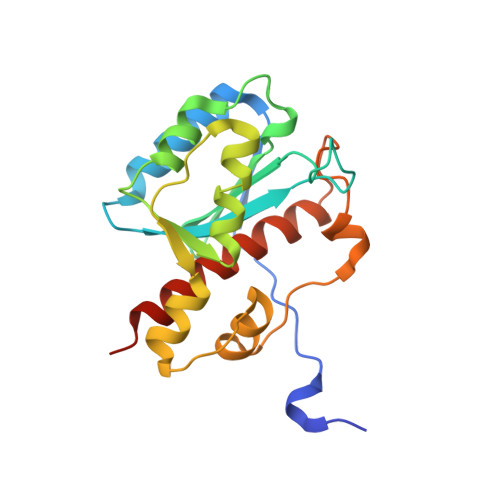WRN exonuclease structure and molecular mechanism imply an editing role in DNA end processing.
Perry, J.J., Yannone, S.M., Holden, L.G., Hitomi, C., Asaithamby, A., Han, S., Cooper, P.K., Chen, D.J., Tainer, J.A.(2006) Nat Struct Mol Biol 13: 414-422
- PubMed: 16622405
- DOI: https://doi.org/10.1038/nsmb1088
- Primary Citation of Related Structures:
2FBT, 2FBV, 2FBX, 2FBY, 2FC0 - PubMed Abstract:
WRN is unique among the five human RecQ DNA helicases in having a functional exonuclease domain (WRN-exo) and being defective in the premature aging and cancer-related disorder Werner syndrome. Here, we characterize WRN-exo crystal structures, biochemical activity and participation in DNA end joining. Metal-ion complex structures, active site mutations and activity assays reveal a nuclease mechanism mediated by two metal ions. The DNA end-binding Ku70/80 complex specifically stimulates WRN-exo activity, and structure-based mutational inactivation of WRN-exo alters DNA end joining in human cells. We furthermore establish structural and biochemical similarities of WRN-exo to DnaQ-family replicative proofreading exonucleases, describing WRN-specific adaptations consistent with double-stranded DNA specificity and functionally important conformational changes. These results indicate WRN-exo is a human DnaQ family member and support DnaQ-like proofreading activities stimulated by Ku70/80, with implications for WRN functions in age-related pathologies and maintenance of genomic integrity.
Organizational Affiliation:
Department of Molecular Biology and Skaggs Institute for Chemical Biology, The Scripps Research Institute, La Jolla, California 92037, USA.















